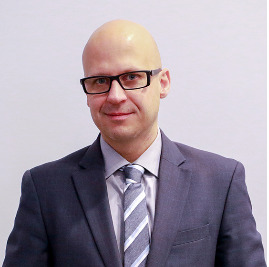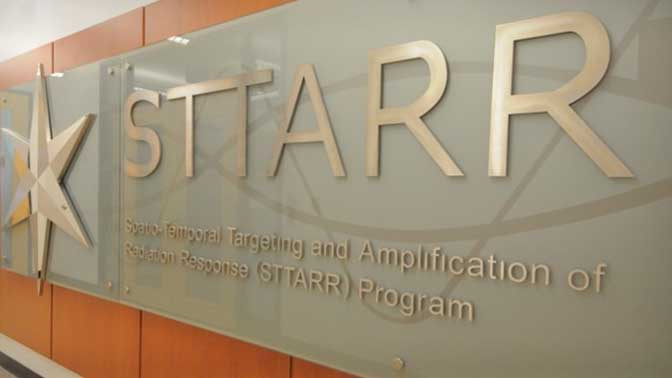UHN Research & Innovation Cores Newsletter
Dear Readers,
Welcome to the second issue of UHN Research & Innovation Cores Newsletter!
In this edition, we are featuring some of our successful facilities such as QIPCM, PMGC & STTARR and take an in-depth look into the exciting initiatives taken by these cores.
QIPCM takes the spotlight in this edition as we get a glimpse of their multi-disciplinary team and focus on their efforts to improve clinical trial outcomes via their innovative service offerings. We then take a look at PMGC and their focused efforts in Single-Cell Genomics which is revolutionizing biological research. Lastly, we talk about STTARR- a multi-disciplinary research facility providing state-of the-art imaging technology to researchers.
Thanks for reading our newsletter!
Luke Brzozowski

UHN Research & Innovation Cores
In The Spotlight - Quantitative Imaging for Personalized Cancer Medicine QIPCM
The QIPCM Team

Clinical trials play a pivotal role in the development of novel drugs and devices, and Medical Imaging has become an integral component of these trials. Quantitative Imaging for Personalized Cancer Medicine (QIPCM) is a research core within TECHNA Institute that collaborates with their clients to optimize solutions as per client needs to drive multi-center trials and attain critical success factors that are within the requisite guidelines of the regulatory authority.
Since its inception in 2013, QIPCM has hosted 54 Clinical Trials and have collated 18.9 Mil Images .
QIPCM provides a host of services which include data de-identification and transfer, centralized storage with remote access, imaging protocol development, novel image analysis tools development, as well as data curation and feature extraction for large-scale imaging research studies.
One on One with Julia Publicover- Senior Manager at QIPCM
QIPCM is managed by Julia Publicover ; who has been with UHN for 15 years and considers herself a customer focused & performance driven Manager- she leads the strategic planning & operational aspects of QIPCM and spearheads her multidisciplinary team in providing end-to-end imaging solutions for its users. In addition to running prospective clinical trials, the QIPCM platform adds value by curating and preserving data that is shareable with collaborators all over the world.
Julia and her team challenge the conventional norms of Medical Imaging and deliver innovative & quantitative image analysis to ensure superlative services and solutions to their clients. One such aspect of QIPCM’s innovative approach that forms the functional backbone of QIPCM’s offering is the utilization of VMWare infrastructure. VMware is a technology solution that facilitates a virtualized & cloud computing environment. Adoption of this technology permits trial investigators globally to remotely access the central image repository; this in-turn permits central review and management of clinical trials.
QIPCM’s team has the expertise and capabilities to cater to imaging needs pertinent to other domains as well, besides clinical trials centered around cancer research.
The Future
The Future Is Now: Single-Cell Genomics

Genomic information has come to play a vital role in many areas of biological research. Advancements in decrypting various types of genomics information has led to important insights that lead to fundamental discoveries, which in turn have addressed critical medical needs and improved health outcomes.
The Princess Margaret Genomics Centre (PMGC) operates with the aim of providing high-quality & cost-effective genomics services; their services range from standard and custom-tailored DNA sequencing technologies to proteo-genomic assays. Advancements in microfluidics technology has led to the development of numerous cost-effective single-cell genomics applications. This new, emerging field has become a niche which PMGC has developed an expertise in.
The human body consist of 30 to 40 trillion single cells, and despite vast research efforts over recent decades, there are still gaps in our knowledge of how many cell types function and communicate with each other in the context of whole organs and tissues. Teasing apart and characterizing the various functions and processes in cells requires concerted efforts in multiple fields of biology. One such field, termed genomics, examines the structure and function of the genome, and frequently relies on the technology of nucleic acid (DNA and RNA) sequencing. Historically, DNA and RNA sequencing would be done by collectively sampling tens of thousands or millions of cells together in one sample, and the output reflects the pooled mixture. Signals coming rare cell types would be difficult to discern in a sea of millions of other cells.
With the advent of single-cell genomics technologies, researchers can now take a sample of complex tissue, dissociate it into a mixture of discrete single cells and extensively examine the transcriptomes and genomes of thousands to tens of thousands individual cells in a single experiment. Single-cell genomics has already led to the discovery of previously unrecognizable cell types, and to paradigm shifts in many areas of cell biology.
PMGC is a national leader in providing research access to single-cell genomics technologies.
In addition to PMGC being a 10X Genomics Certified Service Provider; the centre also offers a wide array of other single-cell genomics solutions such as Fluidigm C1, BD Rapsody, Mission Bio Tapestri & Celsee Genesis. Furthermore, PMGC provides clients with expert advice on experimental design and cell preparation methods that help to ensure that users are able to get the highest quality data from their experiments.
STTARR- A Multi- Faceted Research Partner

The STTARR (Spatio-Temporal Targeting and Amplification of Radiation Response Program) Innovation Centre is a comprehensive core facility offering full service from study design to its execution to its analysis. STTARR offers state-of-the-art preclinical imaging resources and scientific support to advance projects for UHN researchers. It utilizes a detailed and efficient one-stop-shopping process whereby researchers can drop off their samples, i.e. tissues or live animals, and obtain robust results easily and effectively. In addition to imaging, STTARR provides access to a fully equipped histopathology laboratory and advanced image visualization and analysis services, including image co-registration, segmentation, quantification of tracer uptake, and machine learning/AI-based image classification.
Numerous projects are already being planned for 2021. The majority will focus on the radiolabeling of nanoparticles and small molecules in order to evaluate their bio-distribution and efficacy in different models of disease. STTARR is also about to run its first studies to determine the efficacy of Targeted Alpha-Particle Therapies (TAT). Expansion of the portfolio of radionuclides is planned so more users can avail themselves of the PET-MR and the SPECT-CT-PET systems and expand the scope of their investigations.
Furthermore, a clinical CT scanner will be installed this year. In addition to its high-resolution features, the new equipment will offer advanced spectral imaging and fluoroscopy capabilities for imaging large animals. Among other applications, the new equipment will allow the further development of intraoperative imaging capabilities and the testing of new medical devices. Located close to two fully equipped animal operating rooms and to the clinical 1.5 T MRI, the new CT scanner will complement and provide additional infrastructure to support translational research.
STTARR has undertaken 750+ projects since its inception in 2008. This innovation centre has benefitted researchers from the fields of oncology, neurology, immunology, cardiology, transplantation, orthopedics, regenerative medicine, and even aided clients in non-medical applications such as archaeology, paleontology and the fine arts.
